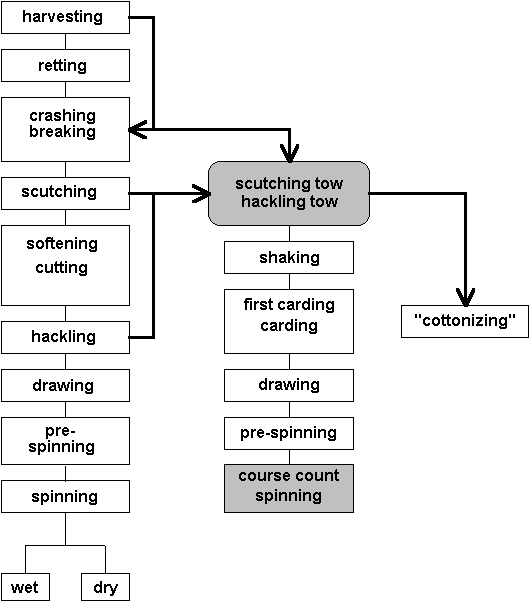If you’ve ever wondered how hemp fabric can be transformed into a myriad of textures and finishes, then this article is for you. From soft and smooth to rough and rugged, the process of achieving these varied characteristics involves a fascinating journey of techniques and treatments. By exploring the intricacies behind this transformation, you’ll gain a deeper appreciation for the versatility and potential of hemp fabric in the world of fashion and beyond. So, let’s embark on a journey where the threads of innovation and creativity intertwine to give birth to an array of captivating textures and finishes in hemp fabric.
The Process of Achieving Different Textures and Finishes in Hemp Fabric
Hemp fabric, known for its durability and versatility, can be processed in various ways to achieve different textures and finishes. In this comprehensive article, we will explore the different techniques and treatments involved in creating unique hemp fabrics that meet different aesthetic and functional requirements.
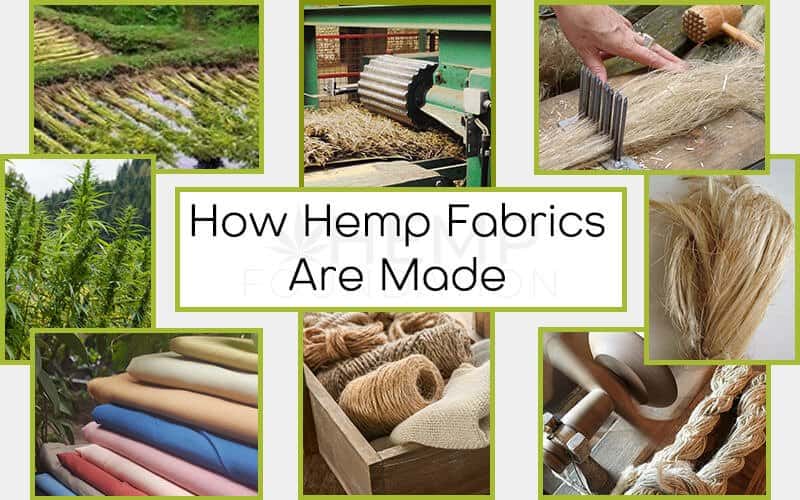
This image is property of hempfoundation.net.
1. Spinning Hemp Fibers
1.1. Retting and Conditioning
The first step in spinning hemp fibers is the process of retting and conditioning. Retting involves the extraction of fibers from the hemp stalks by either natural or chemical means. Natural retting is a traditional method that utilizes exposure to dew, water, or bacteria, while chemical retting involves the use of enzymes or chemicals. Once the fibers are separated, they undergo conditioning to remove any impurities or unwanted substances.
1.2. Breaking and Scutching
After retting and conditioning, the hemp fibers are further processed through breaking and scutching. Breaking involves breaking the long hemp stalks into smaller pieces, while scutching removes the woody components and further refines the fibers. These steps prepare the hemp fibers for spinning into yarn or thread.
1.3. Hackling or Combing
To achieve finer and smoother hemp fibers, the process of hackling or combing is employed. This involves combing the fibers to remove any short or tangled pieces, resulting in longer and more uniform strands. Hackling improves the quality of the hemp fibers, making them more desirable for spinning and weaving.
2. Weaving Techniques
2.1. Plain Weave
Plain weave is the most basic and common weaving technique used in hemp fabric production. It involves interlacing the warp and weft threads in an alternating pattern, creating a simple yet sturdy fabric structure. Plain weave fabrics have a balanced appearance and offer good breathability and strength.
2.2. Twill Weave
Twill weave is another popular option for creating different textures in hemp fabric. This technique involves weaving the threads in a diagonal pattern, resulting in a distinctive diagonal line or texture on the fabric surface. Twill weave fabrics are known for their durability, drape, and resistance to wrinkles. They are often used in applications where a more pronounced texture is desired.
2.3. Satin Weave
Satin weave is a complex and tightly woven technique that produces a smooth and lustrous fabric surface. This weave structure allows for maximum thread float on the surface, creating a luxurious and shiny appearance. Satin weave hemp fabrics are often used for elegant and high-end applications.
3. Surface Treatments
3.1. Mercerization
Mercerization is a chemical treatment used to enhance the luster, strength, and absorbency of hemp fabric. The fabric is treated with a caustic soda solution, causing the cellulose fibers to swell and increase in diameter. This process improves the fabric’s ability to take up dyes and increases its overall strength and durability.
3.2. Burnishing
Burnishing is a mechanical process that involves rubbing the fabric surface with a hard object to create a polished or glossy appearance. This treatment can be applied to hemp fabric to achieve a smooth and shiny finish. Burnished hemp fabrics are often used in high-end fashion and upholstery applications.
3.3. Singeing
Singeing is a process where the fabric surface is exposed to flame or hot metal plates to burn off any protruding fibers. This treatment results in a smoother and cleaner fabric surface, reducing pilling and improving the fabric’s overall appearance.
4. Mechanical Processes
4.1. Calendering
Calendering is a mechanical process that involves passing the fabric through high-pressure rollers to create a smooth and polished finish. This treatment can be used to achieve a variety of textures and effects on hemp fabric, ranging from a high sheen to a muted and textured surface.
4.2. Embossing
Embossing is a mechanical process where the fabric is passed through heated rollers that have a pattern engraved on them. The heat and pressure from the rollers transfer the pattern onto the fabric surface, creating a raised or textured design. Embossed hemp fabrics can add dimension and visual interest to various applications.
4.3. Napping
Napping is a process where the fabric surface is brushed or raised to create a soft and fuzzy texture. This can be achieved by passing the fabric over rotating cylinders covered in wire brushes. Napped hemp fabrics are known for their warmth and softness, making them suitable for cozy apparel and home textile applications.
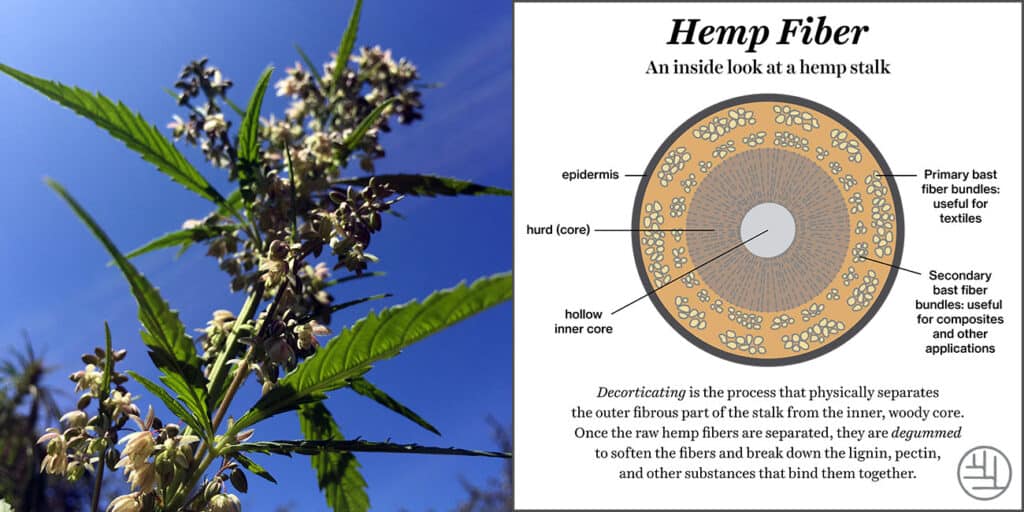
This image is property of fibershed.org.
5. Dyeing and Printing
5.1. Direct Dyeing
Direct dyeing is a common method of coloring hemp fabric, where the dye is applied directly to the fabric in a dye bath. This process allows the dye molecules to penetrate the fabric fibers, resulting in vibrant and long-lasting colors.
5.2. Discharge Printing
Discharge printing is a technique used to create patterns on hemp fabric by selectively removing the color from a previously dyed fabric. The fabric is treated with a discharge agent, which reacts with the dye and removes its color, creating a pattern or design.
5.3. Pigment Printing
Pigment printing involves applying a colored paste directly onto the fabric surface to create patterns or designs. Pigment prints sit on top of the fabric fibers and are not chemically bonded, resulting in a softer hand feel and a wide range of colors and effects.
6. Wrinkle Resistance
6.1. Cross-Linking Agents
Cross-linking agents are chemical compounds that can be applied to hemp fabric to improve its resistance to wrinkles. These agents form cross-links between the fabric’s cellulose molecules, enhancing its dimensional stability and reducing creasing.
6.2. Synthetic Resins
Synthetic resins, such as acrylics or urea-formaldehyde resins, can be used to treat hemp fabric and provide wrinkle resistance. These resins form a coating on the fabric surface, helping it maintain its shape and reducing the formation of wrinkles.
6.3. Heat Treatment
Heat treatment is often used in combination with other wrinkle-resistant techniques to set the fabric’s shape and reduce the appearance of wrinkles. The fabric is exposed to controlled heat, causing the fibers to relax and retain their new shape.
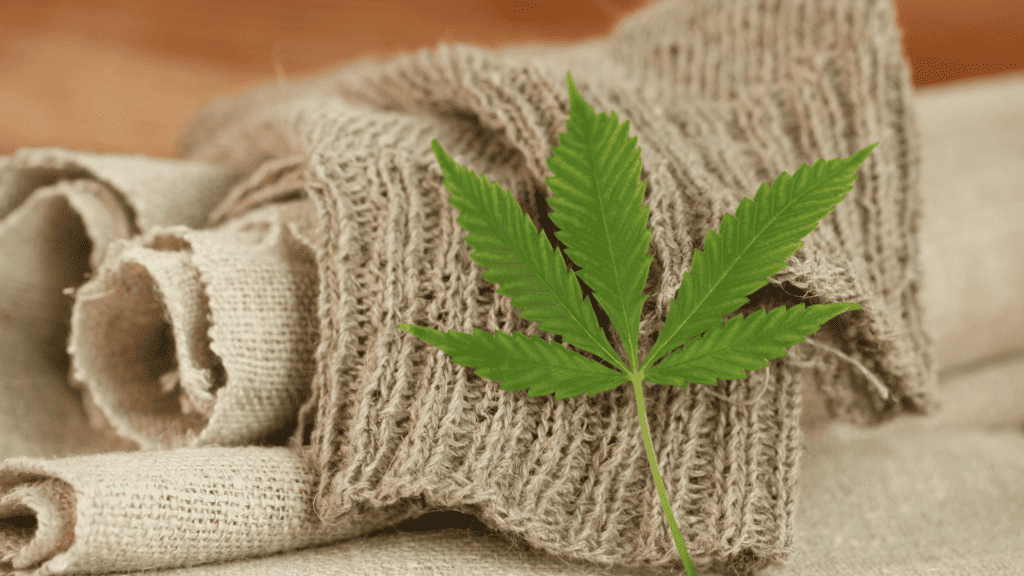
This image is property of static.bskfashion.com.
7. Softening Treatments
7.1. Enzymatic Treatment
Enzymatic treatments involve the use of specific enzymes to soften hemp fabric. These enzymes break down the natural fibers, making them more pliable and enhancing their softness. Enzymatic treatments are often preferred for their environmentally friendly nature.
7.2. Mechanical Softening
Mechanical softening techniques involve the use of physical processes, such as tumbling or agitation, to soften hemp fabric. These processes help to relax the fabric’s fibers, making them more supple and comfortable to the touch.
7.3. Silicone-Based Softeners
Silicone-based softeners are often used to impart a silky and smooth feel to hemp fabric. These softeners create a thin layer on the fabric surface, reducing friction and enhancing comfort. Silicone-based softeners can also improve the fabric’s durability and resistance to wear and tear.
8. Insulating and Water-Repellent Finishes
8.1. Lamination
Lamination involves bonding a thin layer of a water-resistant material, such as polyurethane or polyvinyl chloride (PVC), to the hemp fabric surface. This treatment creates a barrier that prevents water penetration, making the fabric suitable for outdoor applications or protective gear.
8.2. Microencapsulation
Microencapsulation is a process where tiny capsules containing special substances, such as phase-change materials or insulating agents, are applied to hemp fabric. These capsules release the substances when triggered by temperature changes, providing insulation or temperature regulation properties to the fabric.
8.3. Fluorocarbon Finishes
Fluorocarbon finishes involve the application of water-repellent chemicals to the hemp fabric surface. These chemicals create a hydrophobic barrier, causing water to roll off the fabric instead of being absorbed. Fluorocarbon finishes enhance the fabric’s water resistance and make it suitable for outdoor or rainy weather conditions.
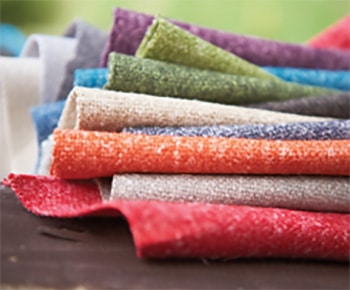
This image is property of www.nocohempexpo.com.
9. Fabrics with Antimicrobial Properties
9.1. Silver or Copper Infusion
Infusing hemp fabric with silver or copper nanoparticles imparts antimicrobial properties to the fabric. These nanoparticles release ions that inhibit the growth of bacteria and other microorganisms, making the fabric resistant to odors and microbial contamination.
9.2. Chemical Treatments
Chemical treatments can be applied to hemp fabric to provide antimicrobial properties. These treatments involve the application of specific chemicals that disrupt the cell membranes of microorganisms, preventing their growth and proliferation.
9.3. Natural Antibacterial Agents
Natural antimicrobial agents, such as essential oils or herbal extracts, can be used to treat hemp fabric. These agents possess inherent antimicrobial properties and can be applied to the fabric to provide a natural and chemical-free solution for controlling microbial growth.
10. Environmental Considerations
10.1. Organic and Sustainable Practices
As with any textile production process, it is important to consider the environmental impact of hemp fabric processing. Organic and sustainable practices, such as using organic hemp fibers, employing eco-friendly dyeing processes, and minimizing water and energy consumption, can help reduce the industry’s ecological footprint.
10.2. Low-Impact Dyes
The use of low-impact dyes in the dyeing and printing of hemp fabric reduces the release of harmful chemicals into the environment. These dyes are made from natural or plant-based sources and require less water and energy during the dyeing process.
10.3. Water and Energy Conservation
Efforts should be made to minimize water and energy consumption throughout the processing of hemp fabric. Implementing water recycling systems, optimizing machinery efficiency, and utilizing renewable energy sources can contribute to the sustainability of the industry.
In conclusion, the process of achieving different textures and finishes in hemp fabric involves a combination of spinning techniques, weaving methods, surface treatments, mechanical processes, dyeing and printing techniques, softening treatments, and environmental considerations. By exploring and understanding these processes, manufacturers and consumers can appreciate the vast possibilities of hemp fabric and its contribution to a sustainable and versatile textile industry.
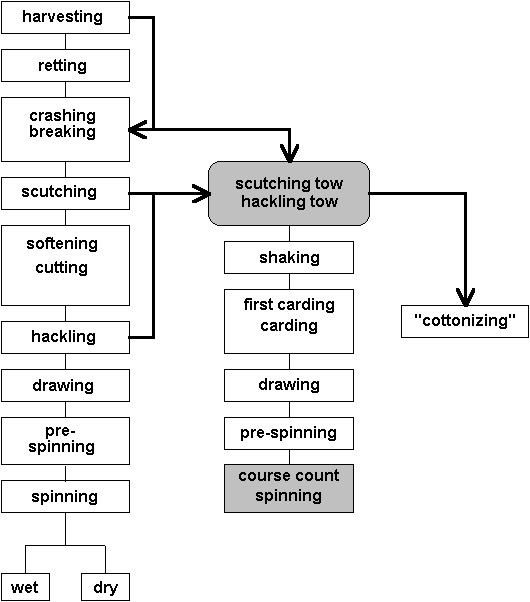
This image is property of www.internationalhempassociation.org.
Recent Posts
Discover how bubble hash is rated on a 1 to 6 scale. From texture and color to aroma and potency, learn the key factors that determine the quality of bubble hash. Whether you're a seasoned cannabis...
Looking to learn about the most popular style of hash? This article explores the different types, from traditional to bubble hash, and reveals the people's favorite. Join us on a journey through the...

